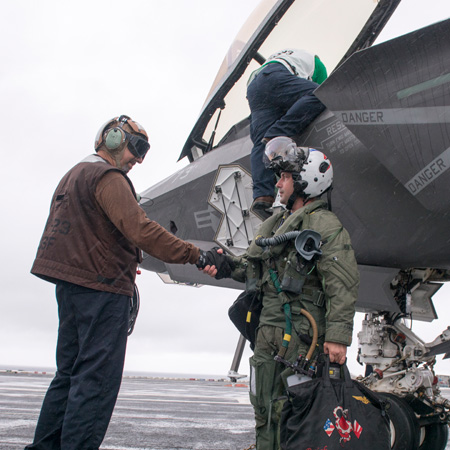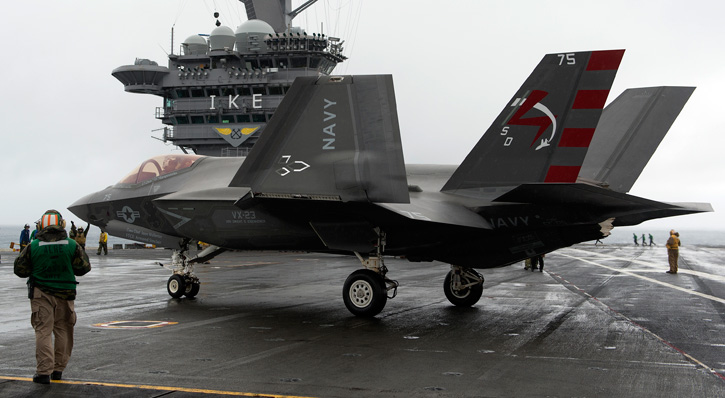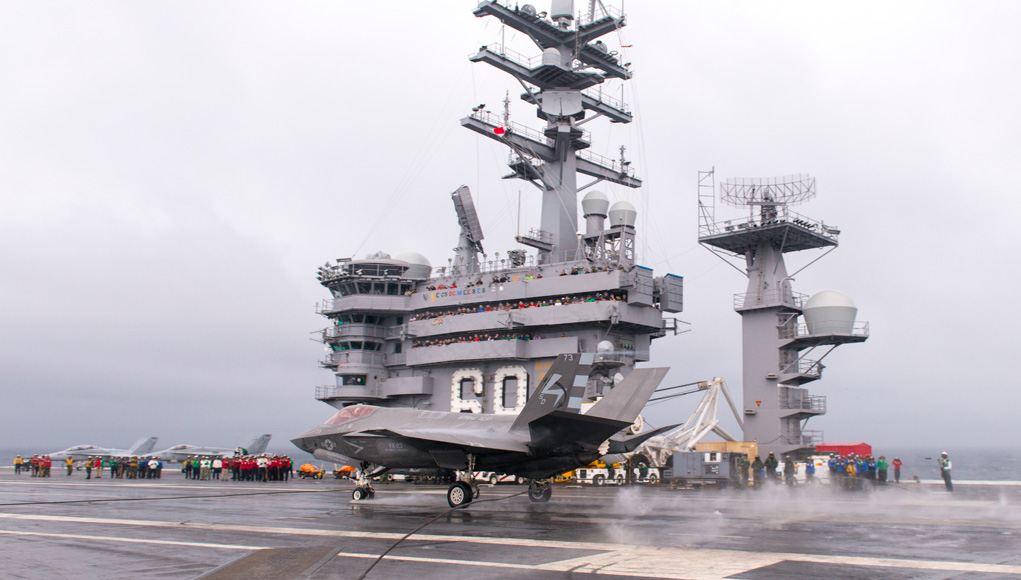Two F-35C Lightning II carrier variants conducted their first arrested landings aboard USS Dwight D. Eisenhower (CVN 69) off the coast of the eastern United States yesterday. The operations are part of the second Developmental Testing (DT II) test phase, the second of three at-sea test phases planned for the F-35C. DT-I occurred Nov. 3-14, 2014 aboard USS Nimitz (CVN 68).
“These sea trials will further expand the F-35C’s flight envelope,” said Lt. Gen. Chris Bogdan, F-35 Program Executive Officer (PEO). “Over the next few weeks we’ll learn more about what it takes to integrate next generation fighters aboard aircraft carriers. The testing we’re doing today will prepare us for next year’s final at-sea developmental test and keep us on track to support the Navy’s 2018 initial operational capability date.”

Naval aircraft undergo DT-I, -II and -III test phases in order to ensure the development of aircraft that meet specifications and to identify mission critical issues sufficiently early in the test phase to deliver fully capable aircraft in time for their scheduled initial operating capability (IOC).
The F-35C is the Navy’s and Marine Corps’ carrier-suitable variant (CV) of the F-35. The aircraft introduces at-sea stealth capabilities the US Navy never had before. Other unique attributes of the new fighter offers are fused targeting and situational awareness sensors, enabling the stealth fighter to maintain ‘radar silence’ while engaging its targets. The F-35C is expected to reach Initial Operational Capability (IOC) in 2018.





















